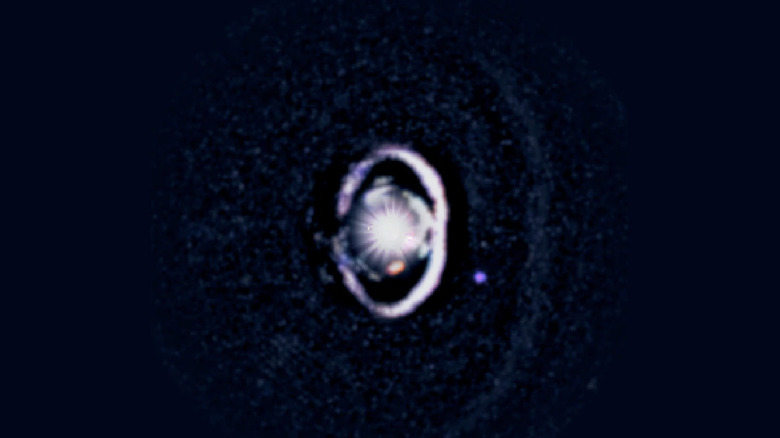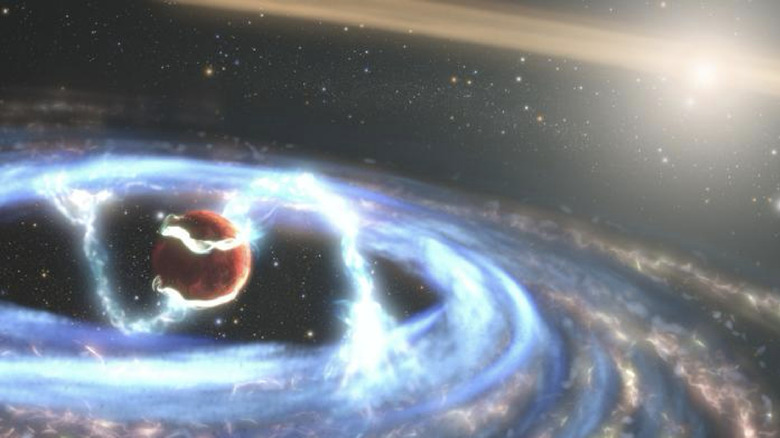We Finally Know What It Looks Like When A Brand-New Planet Is Born
In 2015, a team of researchers from the University of Arizona caught imagery of a planet in the early stages of its formation. To date, scientists have catalogued 5,989 exoplanets, but most of them were discovered in mature states. Finding one in its genesis phase, as a result, was a special achievement. Fast forward to 2025, and experts from the same institution have now spotted what they call a "growing baby planet" for the first time within a multi-ring system.
The nascent planet, named WISPIT 2b, is growing around a star that is roughly the same size and mass as the Sun. The team behind the discovery says it is "a very rare example of a protoplanet in the process of accreting material onto itself." Interestingly, there are apparently two more planets around this infant planet, spaced across four rings that act as feeding material. Now, finding a young planet like this is a fairly difficult task, as it requires a long and patient hunt for young disk systems, which are a rarity.
Now, "baby" is a metaphorical term here that best describes the life stage. If we were to go by the literal definition, this comic baby is quite a behemoth. Just how big? The researchers estimate that it's roughly five times as massive as Jupiter, the biggest planet in our solar system. On the flip side, if Jupiter were 5,000 times younger than its current age, this is what it would look like to an observer roughly 4.5 billion years ago.
A remarkable discovery
The discovery of WISPIT 2b is coincidental as well as extraordinary. So far, only a handful of young growing protoplanets have been spotted, but this is the first time that a planetary seed has been spotted in the gap within planetary disks. These disks, which are also known as proplyds and form around freshly born stars, serve as construction zones for planetary systems. In the simplest terms, dust and solid particles in the disk come together and lead to the formation of planets. So far, it has been speculated that the gaps between these disks are caused by protoplanets, but the spotting of WISPIT 2b marks the first time the phenomenon has been observed.
When scientists started hunting for something like WISPIT 2b, they turned to a cutting-edge optical system called MagAO-X (Magellan Adaptive Optics System eXtreme) to detect signs of hydrogen alpha or H-alpha. This particular variety of Hydrogen is produced when gas falls on an infant planet, producing a plasma that creates a unique optical sign. As for the disk surrounding the emerging planet, it was spotted by a student at the Netherlands' Leiden Observatory using the Very Large Telescope (VLT) at the European Southern Observatory in Chile.
During observation, WISPIT 2b appeared as a dot of light "inside the gap between two rings of the protoplanetary disk around the star." And while at it, the team discovered yet another object sitting at the inner edge of the disk that could be another planet. Regardless, the spotting of WISPIT 2b is a crucial milestone, one that will help scientists understand the mystery of planet formation and take a peek at the origins of our own solar system.

